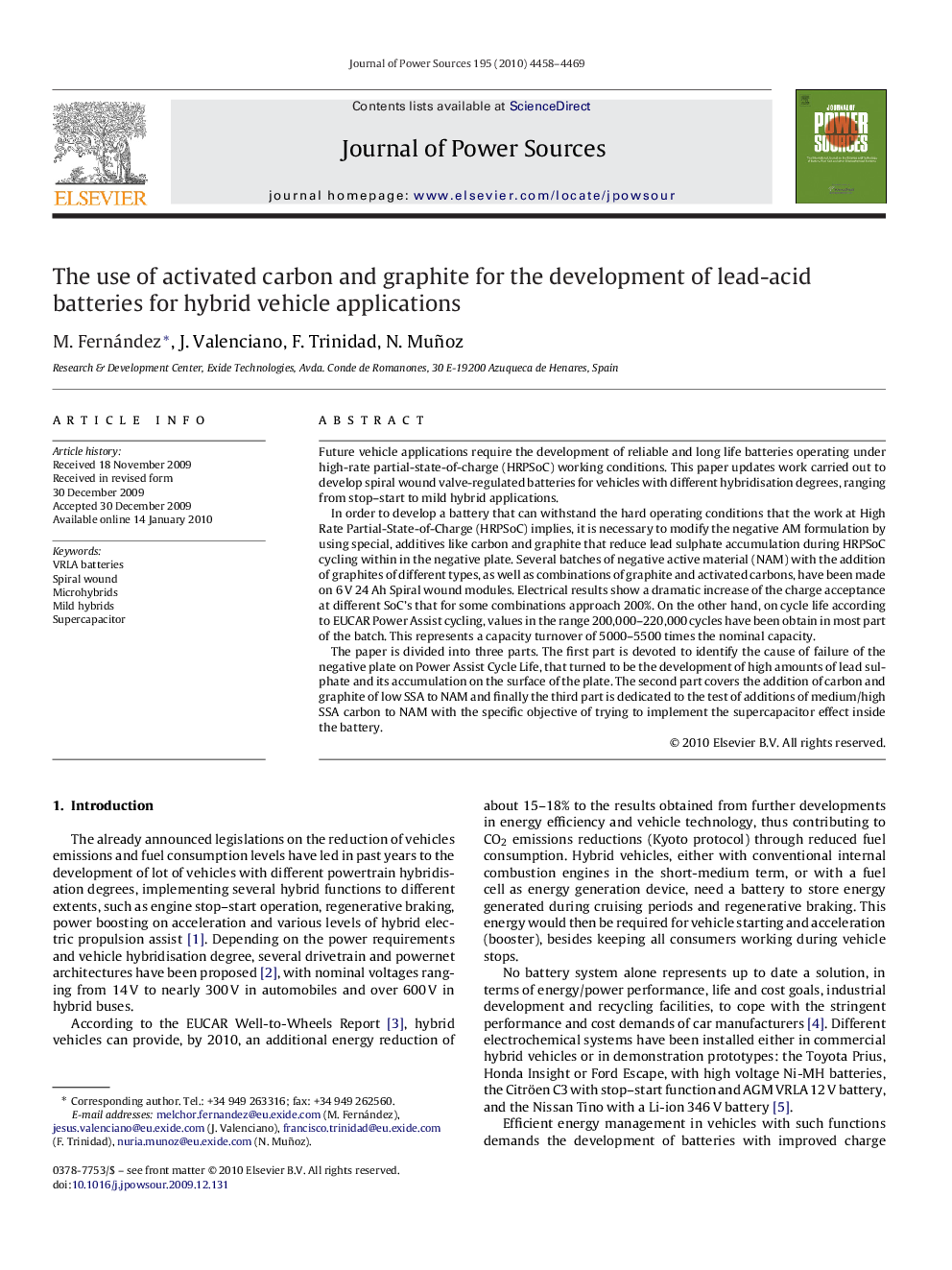| کد مقاله | کد نشریه | سال انتشار | مقاله انگلیسی | نسخه تمام متن |
|---|---|---|---|---|
| 1293777 | 973569 | 2010 | 12 صفحه PDF | دانلود رایگان |

Future vehicle applications require the development of reliable and long life batteries operating under high-rate partial-state-of-charge (HRPSoC) working conditions. This paper updates work carried out to develop spiral wound valve-regulated batteries for vehicles with different hybridisation degrees, ranging from stop–start to mild hybrid applications.In order to develop a battery that can withstand the hard operating conditions that the work at High Rate Partial-State-of-Charge (HRPSoC) implies, it is necessary to modify the negative AM formulation by using special, additives like carbon and graphite that reduce lead sulphate accumulation during HRPSoC cycling within in the negative plate. Several batches of negative active material (NAM) with the addition of graphites of different types, as well as combinations of graphite and activated carbons, have been made on 6 V 24 Ah Spiral wound modules. Electrical results show a dramatic increase of the charge acceptance at different SoC's that for some combinations approach 200%. On the other hand, on cycle life according to EUCAR Power Assist cycling, values in the range 200,000–220,000 cycles have been obtain in most part of the batch. This represents a capacity turnover of 5000–5500 times the nominal capacity.The paper is divided into three parts. The first part is devoted to identify the cause of failure of the negative plate on Power Assist Cycle Life, that turned to be the development of high amounts of lead sulphate and its accumulation on the surface of the plate. The second part covers the addition of carbon and graphite of low SSA to NAM and finally the third part is dedicated to the test of additions of medium/high SSA carbon to NAM with the specific objective of trying to implement the supercapacitor effect inside the battery.
Journal: Journal of Power Sources - Volume 195, Issue 14, 15 July 2010, Pages 4458–4469